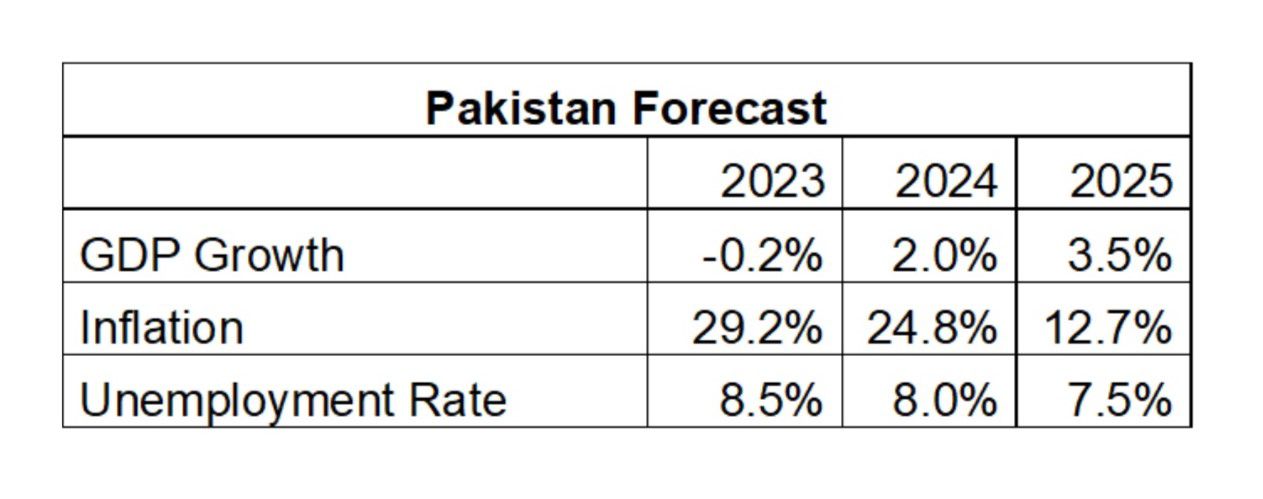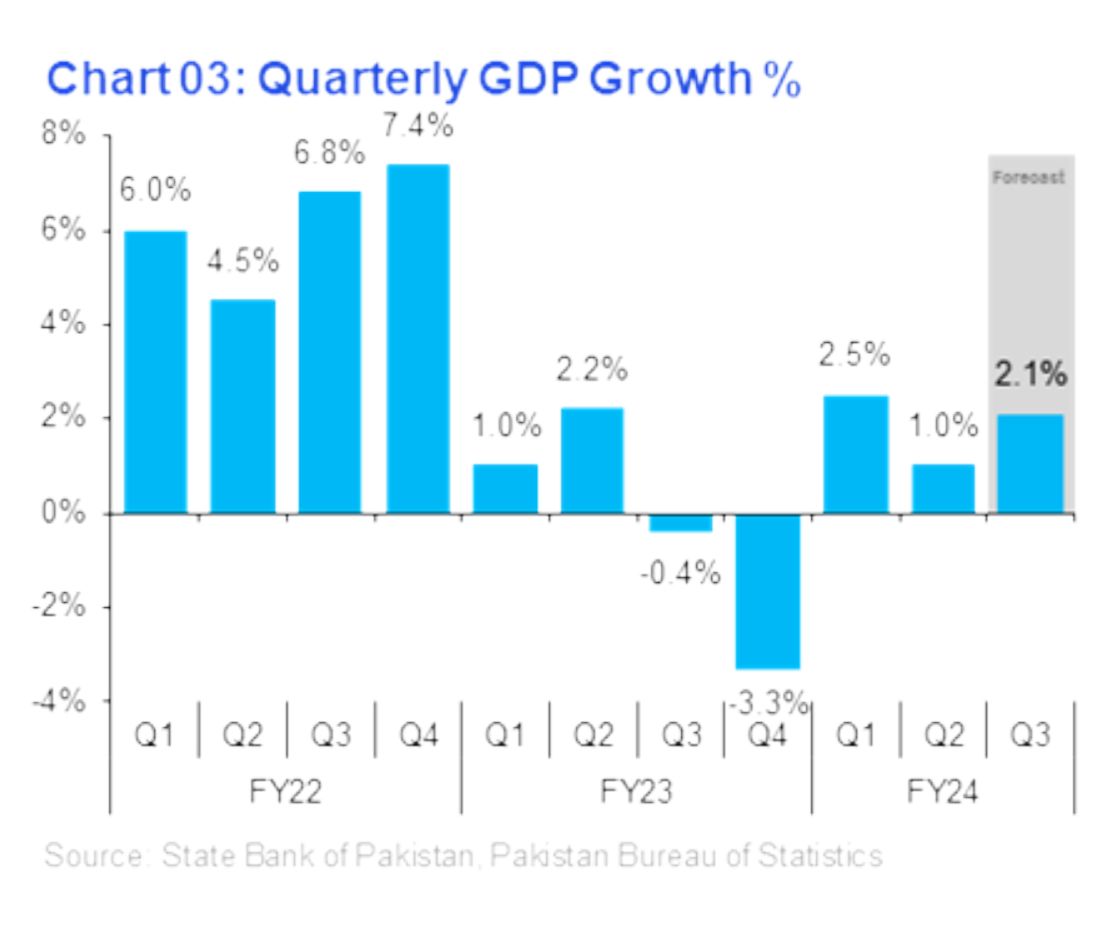On the path to recovery, anticipating policy rate cut
- Inflation deacceleration, central bank likely to begin monetary easing.
- Amid higher external financing requirements, a new IMF program in the offing.
- The newly elected government is set to present its first federal budget, aligning with IMF conditions through tax base expansion.
Pakistan has faced numerous economic challenges in recent years, particularly during the hyperinflationary period when the average inflation rate remained at 29% in FY23 and 26% in the ongoing year (July 2023-April 2024). The severe weakening of the local currency (PKR) against USD was the dominant factor. Additionally, demand-supply imbalances and higher energy tariffs further augmented the inflationary pressures.
While the recent decrease in inflation is promising, macroeconomic risks still persist, driven by a high debt-to-GDP ratio (76%) and limited foreign exchange reserves. At the start of fiscal year, Pakistan was on the verge of default amid political and economic uncertainty, grappling with insufficient foreign inflows. Pakistan's import dependence leads to cyclical economic patterns. Insufficient dollar reserves and debt repayments prompted the need for import restrictions to stabilize the external account.
With curtailed imports, the government managed to reduce the current account deficit to just $202 million from July 2023 to April 2024, compared to nearly $4 billion during the same period last year. Notably, from February to April 2024, the current account reported a consecutive surplus of $1 billion (see Chart 02), if this trend continues, Pakistan is set to report a current account surplus after 12 years mainly attributable to decline in trade deficit by $5 billion during July 2023 to April 2024.
Despite these improvements, foreign exchange reserves remained low at $14.3 billion (equivalent to two months of import cover), given the estimated gross financing needs of around $24 billion annually for the next three years. Thus, negotiations are underway for another three-year IMF program, amounting to $7-8 billion to address financing requirements and stabilize economic indicators.


The newly elected government is going to present its first budget, which is expected to align closely with IMF conditions. Such measures may encompass broadening the tax base, imposition of general sales or carbon taxes on petroleum products to boost revenues and removal of subsidies, albeit with the expectation of short-term inflationary repercussions.
Encouragingly, macroeconomic indicators exhibit signs of recovery, especially with robust growth in agriculture, easing inflationary pressures, and better management of the external account (see Chart 03). In addition, rebound in industrial activity and strengthening fiscal position (with the primary balance standing at 1.5% of GDP during July-March 2023-24) depicting a promising outlook. Business confidence surveys reflect improved optimism by 42% compared to the last quarter conducted in December 2023. As a result, GDP growth for FY24 is forecasted at 2.0% with further acceleration to 3.5% in FY25.

Nevertheless, the elevated debt servicing costs (56% of the total Government’s revenue) stemming from the high policy rate pose significant challenges in managing the fiscal account, necessitating strategic interventions for sustainable growth.
Moreover, in a bid to attract foreign investment, the government has established the Special Investment Facilitation Council (SIFC), receiving a positive response from Middle Eastern nations. If these initiatives materialize, the anticipated economic resurgence is poised to surpass the FY25 projections.

Explore the national economic outlook for a selection of countries in Asia
Contact us
Connect with us
- Find office locations kpmg.findOfficeLocations
- kpmg.emailUs
- Social media @ KPMG kpmg.socialMedia


